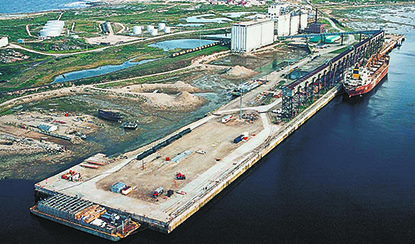If oil joined grain flowing up the rail line to Churchill, the port and the line would have a better chance of surviving, says the head of the Hudson Bay Route Association.
Even if the proposal to ship unprocessed crude through the port raises the hackles of environmentalists, that kind of traffic is really nothing new for the sub-arctic port.
“Refined oil and diesel fuel and gas has travelled up the Churchill line for decades,” said HBRA president Sinclair Harrison, a Moosomin, Sask. farmer.
Read Also

Pakistan reopens its doors to Canadian canola
Pakistan reopens its doors to Canadian canola after a three-year hiatus.
The proposal to ship oil via rail through Churchill is part of the attempt by Canada’s energy industry to find a way around the pipeline bottleneck that is strangling the flow of oil out of Western Canada.
Much oil has been flowing to the U.S. and eastern Canada in railway tanker cars, but advocates of the Port of Churchill think that would be another good outlet. In fact, the port already has a complex of little-used giant oil tanks.
“It’s underutilized. It’s 50 million litres (capacity),” said Harrison.
The Wilderness Committee, an environmental watchdog organization, has attacked the proposal, arguing it poses an unacceptable risk of damage if the challenging rail line conditions cause a derailment and spill.
It has said the transport of oil down the line is a threat to the viability of Churchill’s eco-tourism industry, which sees thousands of tourists per year travel to the remote town to see polar bears and whales.
The Manitoba government has been largely silent on the issue. Both the economic development agency of Churchill and railway operator Omnitrax are promoting the idea.
Harrison said the Lac Megantic, Que., disaster, in which a town centre was demolished and 47 people were killed by a runaway train carrying oil, won’t make the public keen to see more oil tanker cars moving down the tracks.
But he said finding more goods for Churchill to move is essential to keeping the port alive.
Currently, there isn’t enough cargo going through the port to make its future secure.
“Basically it’s just been grain and merchandise,” said Harrison.
















